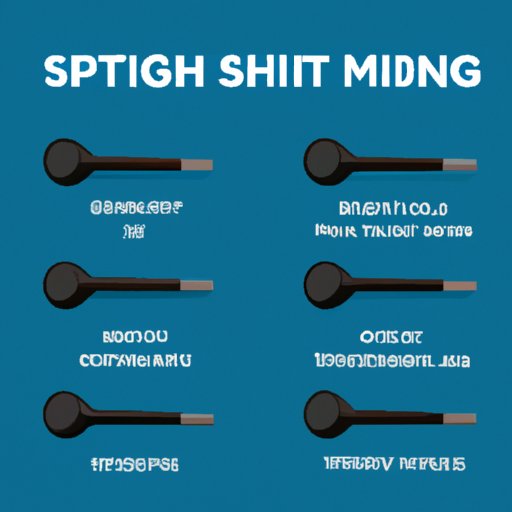
Introduction
If you’re looking for a fun and engaging way to improve your driving skills, then learning to drive stick shift is a great option. However, it can also be intimidating and overwhelming, especially for beginners. In this article, we will explore the basics of driving stick shift and why it’s worth the effort. Whether you’re a new driver or looking to switch to a manual car, this guide is for you. We will cover everything from the basics of stick shift to troubleshooting tips that will help you become a confident and skilled driver.
Break Down the Basics
The key to driving stick shift is understanding the basic components of the car and how they work together. The three main components of a manual car are the clutch, gear shift, and gas pedal. The clutch helps to engage and disengage the engine, while the gear shift controls the speed. The gas pedal is used to increase or decrease the engine’s rpm. These components are essential to understanding how to drive stick shift.
Mastering the Clutch
One of the most important aspects of driving stick shift is mastering the clutch. The clutch is used to connect and disconnect the engine and the transmission, allowing the driver to shift gears. It’s important to find the biting point, which is the point at which the clutch begins to engage the engine. A common issue faced by beginners is stalling the car, which can be avoided by releasing the clutch pedal slowly and smoothly. There are several techniques that can help you master the clutch and avoid stalling, which we will explore in this section.
Smooth Gear Shifting
Once you have mastered the clutch, the next step is to learn how and when to shift gears. Rev matching is an essential technique that can help you shift gears smoothly and avoid grinding the gears. While it can be challenging at first, mastering gear shifting can greatly improve your driving experience. In this section, we will explore various techniques for gear shifting and provide tips for avoiding common mistakes.
Starting and Stopping
Starting and stopping a manual car can be tricky. It requires a more complex sequence of steps than an automatic car. You need to start the car, engage the clutch, and shift gears. In this section, we will provide a detailed sequence of steps for starting the car and getting it moving. We’ll also describe how to come to a safe stop using the clutch and brake.
Navigating Hills
One of the most challenging aspects of driving stick shift is navigating hills. Uphill driving requires a different technique than driving on flat terrain, while downhill driving requires a different approach altogether. In this section, we will explore the challenges of driving stick shift on hills and provide step-by-step instructions for driving uphill and downhill.
Troubleshooting Tips
Even the most experienced drivers face challenges when driving stick shift. Common issues faced by beginners include stalling, jerky movements, and gear slippage. In this section, we will describe common issues faced by beginners and provide troubleshooting tips. With practice and patience, you can overcome these issues and become a confident and skilled driver.
Conclusion
Learning to drive stick shift can be challenging, but it’s also incredibly rewarding. Not only does it improve your driving skills, but it also gives you a greater sense of control and engagement with your car. We hope this article has provided you with the basic knowledge and skills to start driving stick shift. Remember to practice, stay patient, and seek further instruction if needed.




